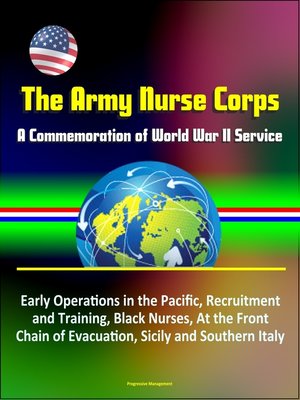The Army Nurse Corps
ebook ∣ A Commemoration of World War II Service--Early Operations in the Pacific, Recruitment and Training, Black Nurses, At the Front, Chain of Evacuation, Sicily and Southern Italy
By Progressive Management

Sign up to save your library
With an OverDrive account, you can save your favorite libraries for at-a-glance information about availability. Find out more about OverDrive accounts.
Find this title in Libby, the library reading app by OverDrive.



Search for a digital library with this title
Title found at these libraries:
| Library Name | Distance |
|---|---|
| Loading... |
This excellent report has been professionally converted for accurate flowing-text e-book format reproduction. The Army Nurse Corps in World War II: More than 59,000 American nurses served in the Army Nurse Corps during World War II. Nurses worked closer to the front lines than they ever had before. Within the "chain of evacuation" established by the Army Medical Department during the war, nurses served under fire in field hospitals and evacuation hospitals, on hospital trains and hospital ships, and as flight nurses on medical transport planes. The skill and dedication of these nurses contributed to the extremely low post-injury mortality rate among American military forces in every theater of the war. Overall, fewer than 4 percent of the American soldiers who received medical care in the field or underwent evacuation died from wounds or disease.
The tremendous manpower needs faced by the United States during World War II created numerous new social and economic opportunities for American women. Both society as a whole and the United States military found an increasing number of roles for women. As large numbers of women entered industry and many of the professions for the first time, the need for nurses clarified the status of the nursing profession. The Army reflected this changing attitude in June 1944 when it granted its nurses officers' commissions and full retirement privileges, dependents' allowances, and equal pay. Moreover, the government provided free education to nursing students between 1943 and 1948.
Military service took men and women from small towns and large cities across America and transported them around the world. Their wartime experiences broadened their lives as well as their expectations. After the war, many veterans, including nurses, took advantage of the increased educational opportunities provided for them by the government. World War II changed American society irrevocably and redefined the status and opportunities of the professional nurse.







